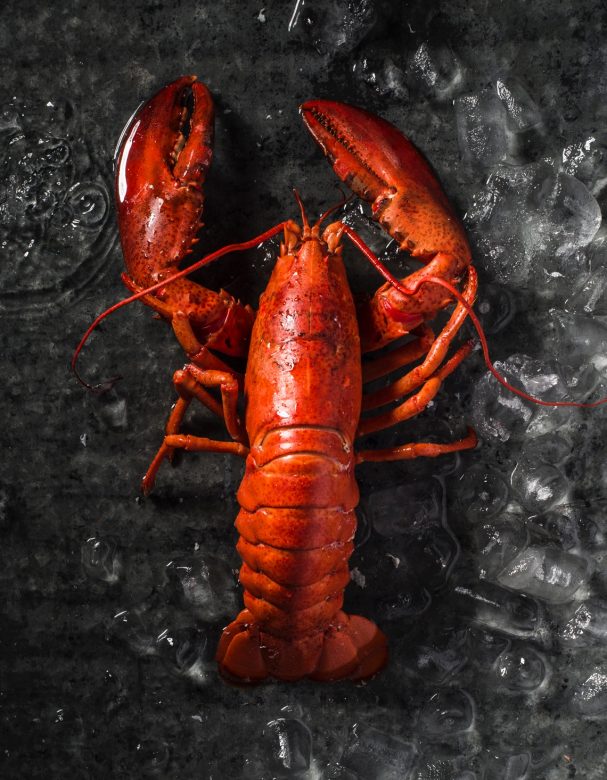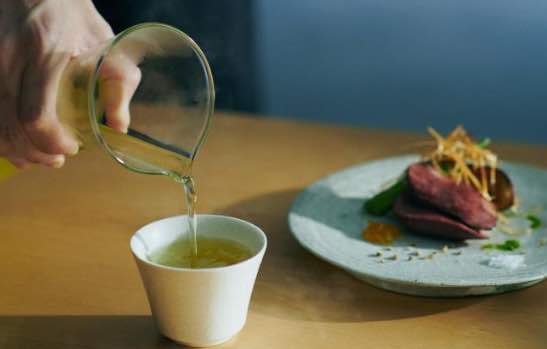One of the great joys of a classic New England lobster dinner is how easy it is to make. No complicated sauces, no fancy techniques, no need to fire up the oven on a hot day. And you need only one pot.
But just because it’s simple doesn’t mean that you can’t run into trouble. In fact, because this is such an elemental meal, it’s important to get the details right. Mostly, that means cooking your lobster the right way. Here are five of the most common mistakes in cooking lobster, and how to avoid them.

5 Mistakes to Avoid When Cooking Lobster
Mark Fleming
5 Mistakes to Avoid When Cooking Lobster
1. Overseasoning the Water
When boiling lobster, you need to add some salt to the water to boost the flavor. But don’t overdo it. Too much salt in the cooking water can overwhelm the meat’s natural sweetness. (This is a common problem in restaurants, where large amounts of lobster are cooked in giant kettles filled with heavily salted water, or even seawater.) So how much salt should you use? A good rule of thumb is 2 or 3 tablespoons of salt for every gallon of water. You’ll get a flavor boost, not a sodium blast.
Note: This rule applies only if you’re boiling lobster. For steaming lobsters, you can use plain water. Why? With steaming, the lobster isn’t submerged in the water, so its natural flavor isn’t diluted. (And even if you did salt the water for steaming, it can’t evaporate, so it would have no way of seasoning the meat.)
2. Crowding the Pot
In order to cook lobsters as quickly and efficiently as possible, you need a very large pot, which will allow the heat to circulate evenly around them. A 4- or 5-quart pot can handle one or two lobsters, but if you’re cooking more than that, even a typical soup pot is going to be too small. This is why every decent New England vacation rental comes with a lobster pot. You’ll need one that can hold at least 16 to 19 quarts to get the job done.
3. Cooking in the Wrong Order
If you’re making the classic lobster dinner combo of lobster, mussels, clams, corn, and potatoes, be sure to do the vegetables first. That way, they cook in fresh water and retain their own flavor. Cook the lobster next, then toss in the shellfish for the last 5 to 7 minutes of cooking. Alternatively, you can cook the mussels and clams separately, steaming them with aromatics such as garlic and herbs, plus wine, beer, or cider to make a tasty broth.
4. Overcooking the Meat
Most inexperienced cooks leave lobsters in the pot for far too long, resulting in dry, rubbery meat. Lobster meat is fully cooked when it reaches 140º. But if you don’t want to have to stick an instant-read thermometer into the tail, you can use these guidelines.
How Long to Cook Lobsters
- Boiling average-size lobsters (1 to 1½ pounds) will take 8 to 12 minutes, depending on size.
- Steaming average-size lobsters will take 9 to 12 minutes, depending on size.
- Soft-shell lobsters (which tend to be available in summer) cook faster than hard-shell (which are sold in winter), so reduce cooking times by 2 to 3 minutes.
5. Failing to Drain
Boiled lobsters accumulate water beneath their shells. And nothing ruins a plate of food more than a flood of salty water when you open things up. So, after the lobster is cooked, cut a small hole in the tip of each claw and hold the lobster upside down to let it drain before serving.
Bonus Lobster Cooking Tips
Rubber Bands
Some hard-core lobster fans insist that the rubber bands that come standard on lobster claws will ruin the flavor of the meat when boiled. We haven’t found this to be true, but if it’s a concern for you, simply hold the lobster by the tail with tongs and carefully snip off the bands right before putting it into the pot.
A More Humane Approach
Many people feel understandably squeamish about killing lobsters themselves and wonder about the best, least stressful way to do it. We’ve tried any number of methods, including standing the lobster upside down to “hypnotize” it before cooking it, and splitting the head with a chef’s knife for an instantaneous death (we don’t like the latter method, as the lobster’s decentralized nervous system can still cause it to thrash around afterward). The technique we prefer is to put the lobsters into a freezer for 30 minutes before boiling, which seems to sedate and numb them.
This post was first published in 2019 and has been updated.
The post 5 Mistakes to Avoid When Cooking Lobster appeared first on New England Today.



